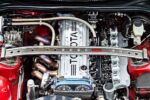Overview of the 2020 Chevy Malibu
The 2020 Chevrolet Malibu represents a continuation of a long-standing legacy in the midsize sedan market. First introduced in 1964, the Malibu has undergone numerous transformations over the decades, adapting to changing consumer preferences and technological advancements. The 2020 model is part of the ninth generation, which debuted in 2016, and it aims to balance style, comfort, and efficiency. With a sleek design and a focus on fuel economy, the Malibu has attracted a diverse range of buyers, from families to commuters.
The 1.5 Turbo Engine: A Double-Edged Sword
One of the standout features of the 2020 Malibu is its engine options, particularly the 1.5-liter turbocharged inline-four engine. This engine was designed to deliver a blend of power and efficiency, producing 160 horsepower while achieving impressive fuel economy ratings. However, as with any vehicle, the introduction of new technology can lead to unforeseen issues. While the turbocharged engine was marketed as a solution for those seeking both performance and savings at the pump, it has not been without its share of problems.
As we delve deeper into the specifics of the 2020 Chevy Malibu’s 1.5 turbo engine, it becomes evident that potential buyers and current owners need to be aware of the common issues that have surfaced. Understanding these problems is crucial for making informed decisions regarding maintenance, repairs, and overall vehicle reliability.
Common Issues with the 2020 Chevy Malibu 1.5 Turbo Engine
The 2020 Chevy Malibu’s 1.5 turbo engine has garnered attention for both its efficiency and its shortcomings. While many drivers appreciate the fuel economy and power delivery, several problems have been reported that can affect performance and reliability. Understanding these issues is essential for current and prospective owners.
Engine Performance Problems
One of the most significant concerns with the 1.5 turbo engine is its performance under various driving conditions. Drivers have reported the following issues:
- Turbo Lag: Some owners have experienced noticeable lag when accelerating, particularly from a stop. This delay can be frustrating and may impact the overall driving experience.
- Rough Idling: Instances of rough idling have been reported, leading to vibrations and an uncomfortable driving experience.
- Loss of Power: Sudden loss of power during acceleration has been a common complaint, raising concerns about the engine’s reliability.
Fuel System Concerns
The fuel system in the 1.5 turbo engine has also been a source of issues. Problems include:
- Fuel Injector Failures: Some drivers have reported premature fuel injector failures, which can lead to poor engine performance and increased emissions.
- Fuel Pump Issues: Inconsistent fuel delivery due to fuel pump malfunctions can cause the engine to stall or run poorly.
Cooling System Problems
The cooling system plays a crucial role in maintaining engine temperature. Issues in this area can lead to severe engine damage. Common problems include:
- Overheating: Reports of engine overheating have surfaced, often attributed to a malfunctioning thermostat or water pump.
- Coolant Leaks: Some owners have noticed coolant leaks, which can lead to further engine complications if not addressed promptly.
Electrical System Glitches
Electrical issues can also plague the 2020 Malibu, affecting the engine’s performance. Notable problems include:
- Sensor Failures: Malfunctioning sensors can lead to incorrect readings, affecting engine performance and fuel efficiency.
- Battery Drain: Some drivers have reported unexplained battery drain, which can leave the vehicle inoperable.
Symptoms and Consequences
Understanding the symptoms associated with these problems can help owners take timely action. Below is a table summarizing the common symptoms and their potential consequences.
| Symptoms | Consequences |
|---|---|
| Turbo lag during acceleration | Poor driving experience and potential safety risks |
| Rough idling | Increased wear on engine components |
| Loss of power during acceleration | Increased risk of accidents |
| Fuel injector failures | Poor engine performance and higher emissions |
| Overheating | Severe engine damage and costly repairs |
| Coolant leaks | Potential engine failure if not addressed |
| Sensor failures | Inaccurate engine performance readings |
| Battery drain | Vehicle inoperability |




0 Comments